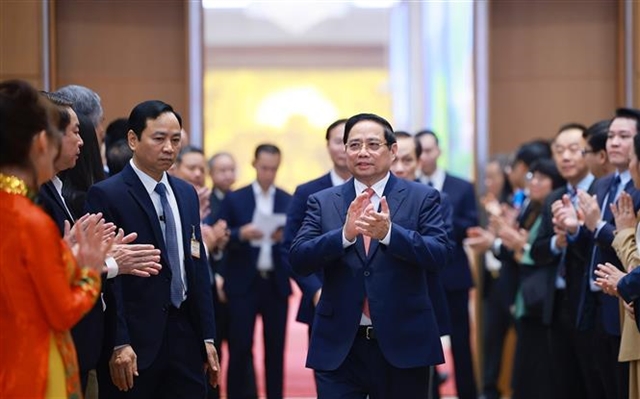 Society
Society

“Finally!” was the sentiment many people share, as the decade-in-the-making Cát Linh-Hà Đông urban rail line carried its first passengers.
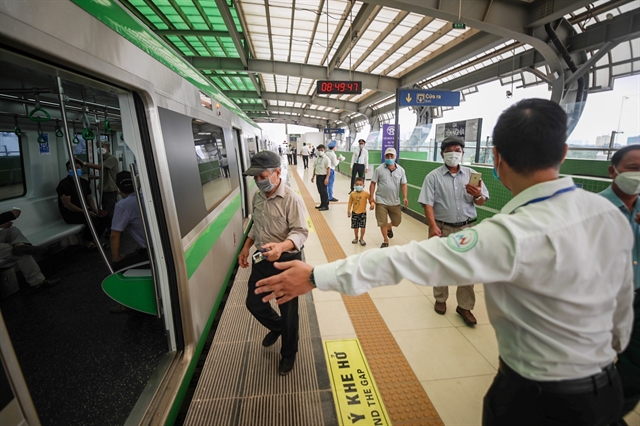
|
| Station staff guided people into the carriages at Cát Linh Station on Saturday. — VNA/VNS Photo Thành Đạt |
HÀ NỘI — From early Saturday morning, crowds gathered at Cát Linh Metro Terminal waiting patiently to get the chance to experience first-hand the much-awaited official operations of Việt Nam's first metro line.
“Finally!” was the sentiment many share, as the decade-in-the-making Cát Linh-Hà Đông urban elevated rail line carried its first passengers.
This should have happened back in 2015, but the project has been beset with long delays and costly overruns.
Đặng Văn Hoà, a resident in Hoàn Kiếm District, said he was delighted to be among the first passengers of the first trains.
He told Vietnam News Agency that he had boarded many metros in more developed nations and was glad to see the Cát Linh-Hà Đông trains in operation.
He hoped the Government will invest into building more urban rail lines to make it easier and more convenient for people to go commute.
Phạm Quang Tuấn, who lives in Hà Đông District near one end point of the line and works on Giảng Võ Street, Cát Linh Ward, near the other end point, said he bought the house in Hà Đông five years ago partly because of the anticipation that the trains would soon be operational.
“Now I probably won’t have to worry about slogging through the congested streets every day getting to work or back home,” Tuấn said.
A resident who lives nearby the Cát Linh Terminal, Trương Văn Điệp, added: “After so many difficulties, I am pleased the project is eventually running, and I found the ride to be quite smooth and quiet, not unlike what I have been witnessing in other countries.”
Others praised the advantages of the mass transit system, especially in terms of convenience, safety, protection from pollution and time worries, compared to driving a motorbike, the most popular method of transport in Việt Nam currently.
Nguyễn Thanh Phương, a resident in Hai Bà Trưng District, said she is really looking forward to try the metro trains, but perhaps at a later date as right now COVID-19 situation in Hà Nội is getting a little more complicated with rising community infections, getting into the crowded, cold tubes might not be the best idea.
She hoped the new metro line would help reduce congestion on the Nguyễn Trãi Street where it passes, the route she usually takes on her way to work, a primary school in Mỹ Đình District.
All in all, about 25,680 passengers have boarded the metro in the first day of operation, announced the Hà Nội Metro on Sunday, with more expected on Sunday as most people are off work.
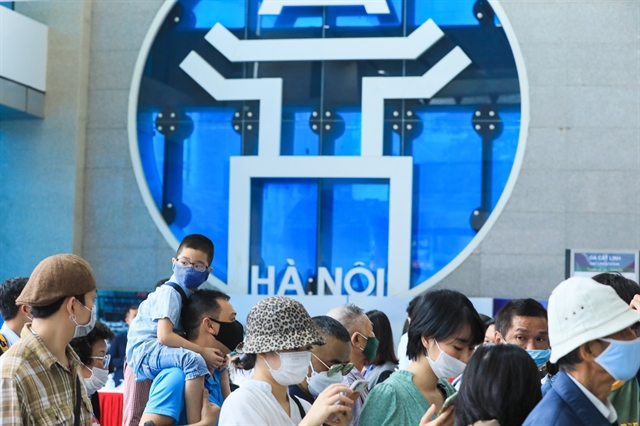
|
| Lines of people eager to experience the metro project at Cát Linh Station. — VNA/VNS Photo Thành Đạt |
15 days of free travel
With a total investment of approximately US$868 million (up $315 million compared to initial estimates) and funded by China’s official development aid (ODA), the elevated line is more than 13km long and has 12 stations and 13 trains. Each train, whose designed speed is 80km per hour, has four carriages capable of carrying more than 900 passengers.
The initial commercial routes of the project are divided into two phases.
In Phase 1, lasting six months, including the first 15 days of free travels for all passengers, four to six trains run from 5:30am to 10pm, at 10 to 15 minute intervals.
In Phase 2, also six months, there will be a total of nine trains running from 5:30am to 10:30pm, with 10-minute intervals reduced to six minutes during peak times.
To board, people go up to the second floor of any of the 12 stations along the line, obtain a ticket (magnet stripped) from the automatic ticket machines with cash or buy directly from ticket kiosks, and get through the ticket barriers.
Metro Hà Nội, the managing unit of the project, has prepared more than 200,000 tickets to issue for passengers in the first 15 days free-of-charge. At the end of each ride, passengers will return these tickets to a station’s staffer at the exit doors.
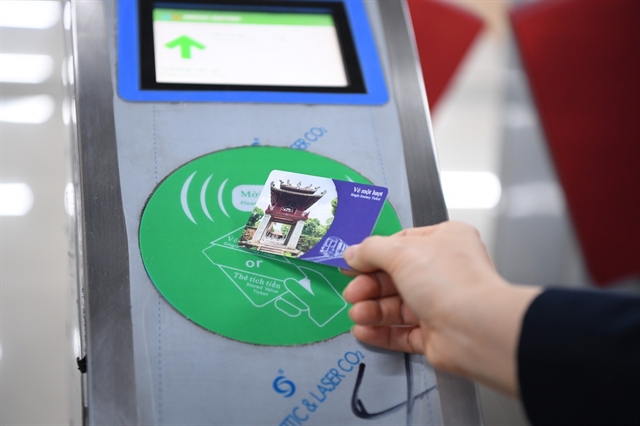
|
| Automatic ticket checking system. — VNA/VNS Photo Thành Đạt |
The municipal People’s Committee has announced the price of the tickets for the metro, with the lowest one being VNĐ7,000 (US$0.31) for a trip and VNĐ30,000 VND for a day pass.
A monthly pass for a passenger is priced at VNĐ200,000, with lower price schemes available for bulk purchases by companies or factories.
People who are eligible for waiving of bus fares are also eligible for free rides on the metro, i.e. children under six years old, people with disabilities, the elderly, people with merits to the revolution, and people considered in poor households.
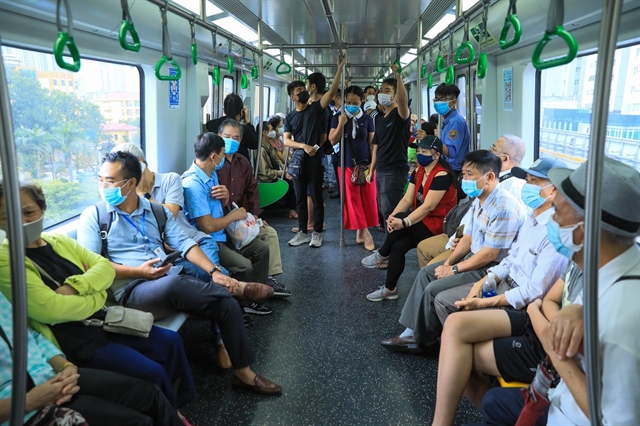
|
| Inside a carriage as the train was running. — VNA/VNS Photo Thành Đạt |
Handover
The quality assessment results of the metro line were approved by the State Council for Acceptance of Construction Projects on October 29, after much controversy and resulting delays over unresolved issues stated in quality assessment reports of the metro by a third-party consultant in France, even after the project was essentially completed.
The council’s approval set the stage for the project to commence operations.
At 7:25am on Saturday, 15 minutes before the first trains departed, under the witness of Hà Nội’s Party Secretary Đinh Tiến Dũng and Deputy Prime Minister Lê Văn Thành, deputy transport minister Nguyễn Ngọc Đông and Vice Chairman of Hà Nội People’s Committee Dương Đức Tuấn signed the agreement on handing over the project from the transport ministry to Hà Nội for management and exploitation.
Over 700 staff are working on the metro line.
Vũ Hồng Phương, Director of Railway Projects Management Unit under the transport ministry, said the urban rail system is always a focus priority for the Government and Hà Nội’s administration as this is a modern method of mass transit that helps reduce traffic jams and pollution.
Among the eight metro projects that have been approved to connect the urban cores of Hà Nội with satellite urban centres, the Cát Linh-Hà Đông was selected as a ‘pilot’ for early investment, to timely alleviate the rising traffic in the western area of the capital city.
Dương Đức Tuấn said with current progress, it would take 8 to 10 years to finish one urban rail line project, so other than continuing to call for ODA, there should be more ‘breakthrough measures’ to expedite the progress. — VNS
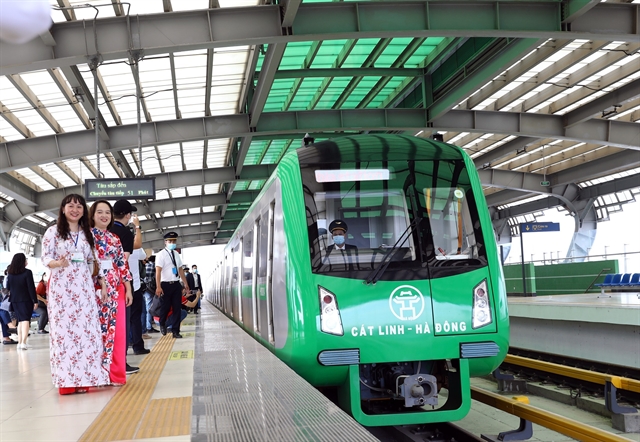
|
| Guests and passengers beside the metro train. — VNA/VNS Photo Thành Đạt |
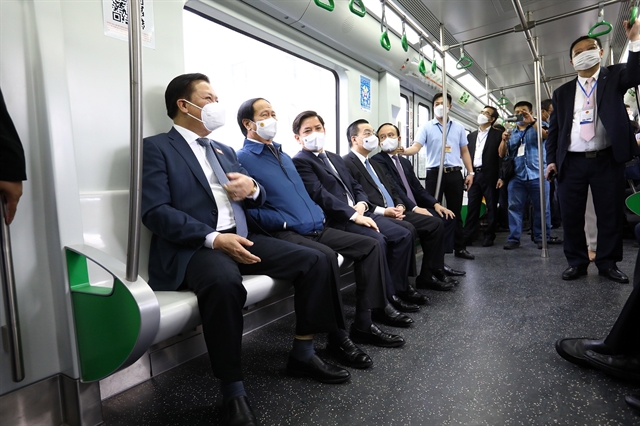
|
| Deputy Prime Minister Lê Văn Thành, Transport Minister Lê Văn Thể along with leaders of Hà Nội's administration on board the first train operational during official runs on Saturday. — VNA/VNS Photo Thành Đạt |
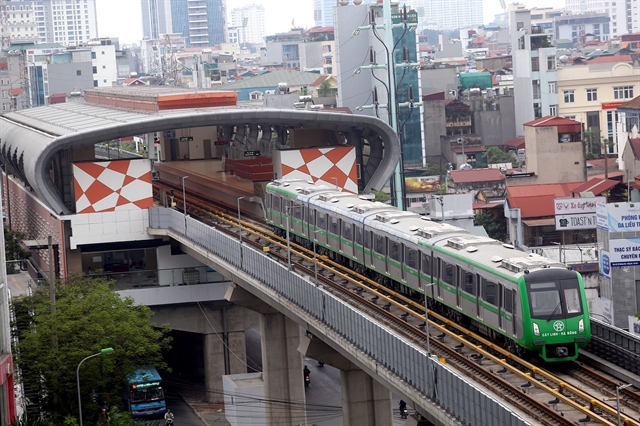
|
| The train departs from Cát Linh Station. — VNA/VNS Huy Hùng |
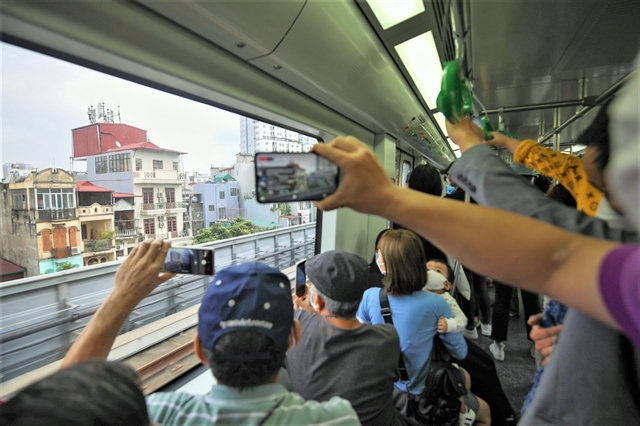
|
| Many took their phones out to record the 'historic' trip. — VNA/VNS Photo Thành Đạt |



